Marine Life Identification Perth WA
Shore Diving
Bi-valves
Bivalvia is a class of marine and freshwater mollusks known for some time as Pelecypoda, but now commonly referred to simply as bivalves. As with Gastropoda and Cephalopoda, the term Pelecypoda is in reference to the animal itself while Bivalvia simply describes the shell... (Wikipedia)
---------------------------------------------------------------------------------------------------------------------------------------------------------------------------
(Pinna bicolor)
Top two pictures taken at Ammo Jetty. I was suprised when the second picture showed how deep these clams bury themselves into the sand.
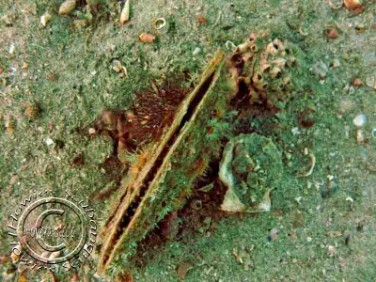
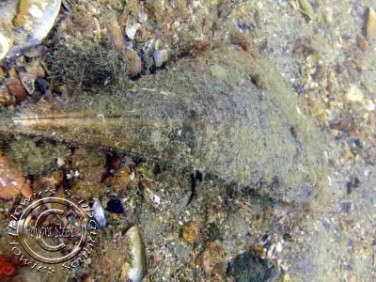
Second set taken at Bulk Jetty shows how big these Clams are
Next two pictured also taken at Bulk Jetty.
I have commented before how many of these clams there are at Bulk Jetty and how many of them are encrusted with some form of marine life.
I am not sure if they require hugs though, maybe the Starfish thinks its lonely, who knows.Chances are this Sea Star is dining on the encrusted Bi-valve.
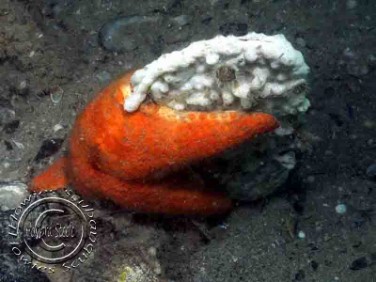
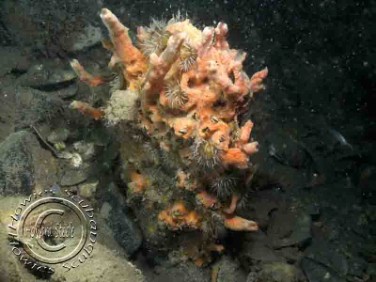
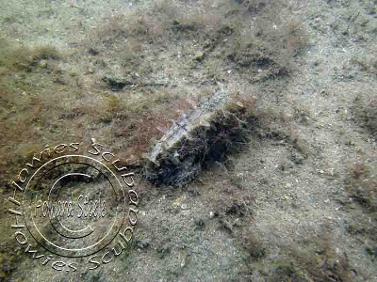
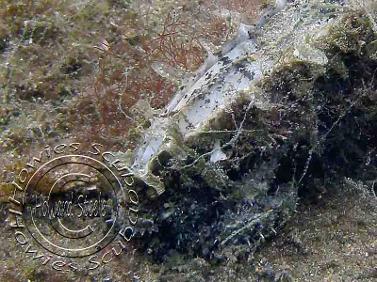
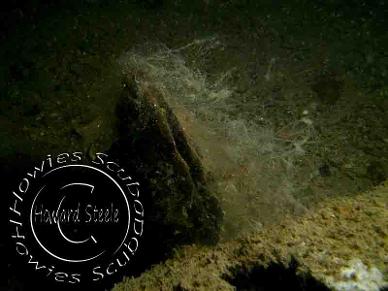
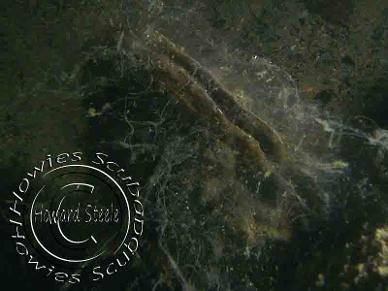
(Electroma georgiana)
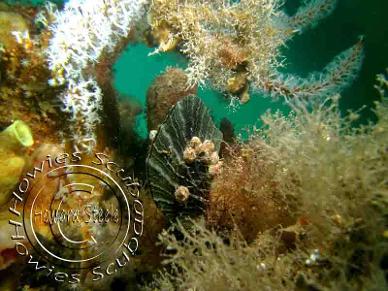
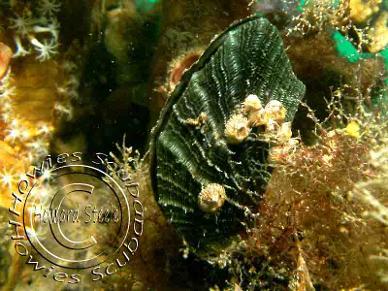
(Malleus meridianus)
I have had these photographs for ages , but did not have a clue what it was. When I swam past it I thought it was some kind of elongated dead mollusc as the hammer reminded me of a Sea Hare, but after a little look around I thought I was just looking at some rusty old debris, then I stumbled on a photograph that clearly showers these as a Hammer Oyster.
Blue Mussels
(Mytilus edulio)
You will find lots of little clusters of Mussels especially on the shallow jetty dive sites.
Photograph taken at Bulk & Ammo Jetty.
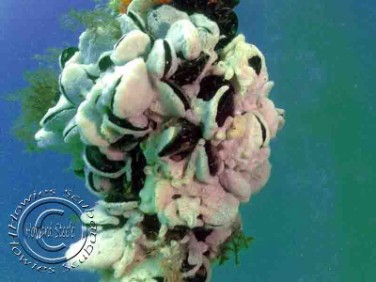
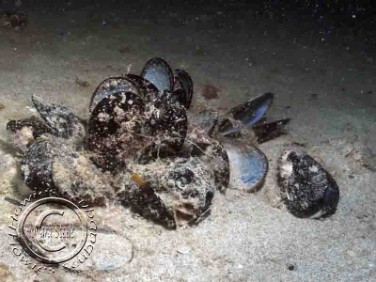
Fine Tawera
(Tawera lagopus)
Photographed at Bulk Jetty.
Grooved Cardita
(Cardita incrassata)
Photographed at Rocky Bay & Robbs Jetty.
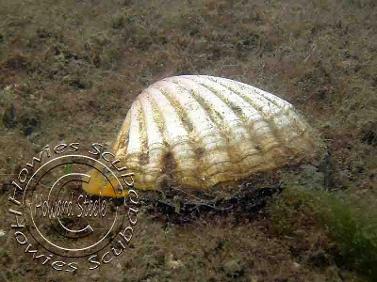
Doughboy Scallop
(Mimachlamys asperrimus)
I was initially unsure which type of Scallops these were. I was under the impression that they were Doughboy Scallops.
The photographs I have seen of Doughboys' they have a row of fine blue eyes along the front which for the life of me I could not identify in these photographs, however all was not lost and.......
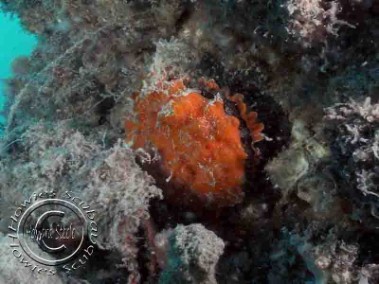
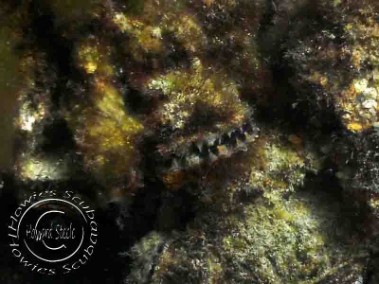
Finally "the proof is out there".
Dough Boy Scallops.......
It took me a while but I now have seen these tiny little eyes on these scallops. I didn't realise how small they were.
I have as you can see highlighted the eyes on this row of pictures here, however the two bottom picture I have left as is so that you can see how difficult it is to notice them.
These photographs have been cropped and magnified from a fair distance because as soon as you get too close the scallop will "clam up" and not reveal anything to the naked eye.
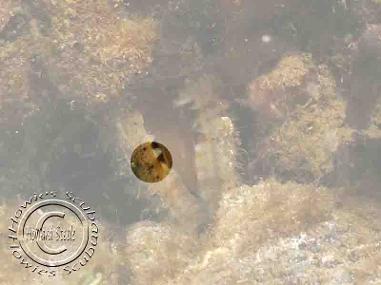
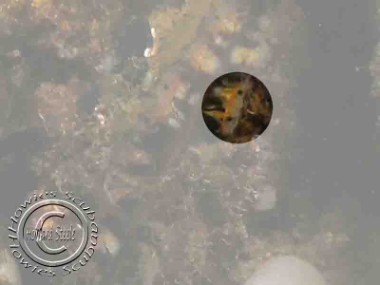
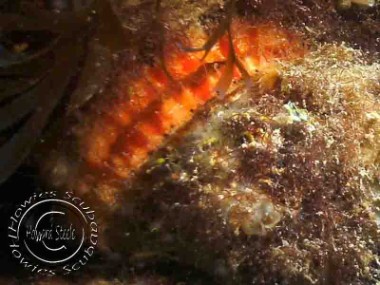
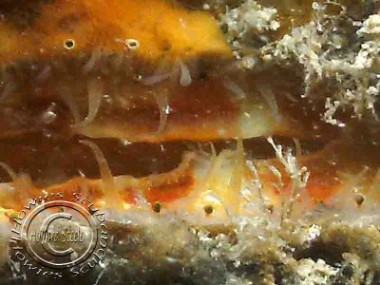
Thorny Oyster
(Spondylus tenellus)
Photographed at Ammo Jetty.
Photographs 3 & 4 Octopus using it as part of the entrance to its house.
(Vulsella Spongarium)
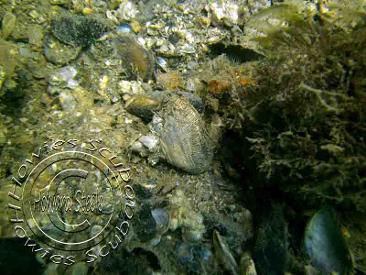
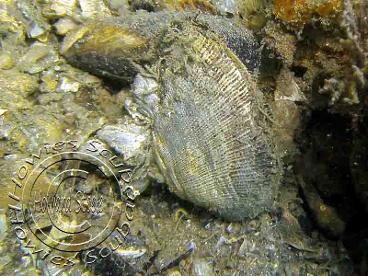
Brachiopods
Brachiopod valves are hinged at the rear end, while the front can be opened for feeding or closed for protection. Articulate brachiopods have toothed hinges and simple opening and closing muscles, while inarticulate brachiopods have un-toothed hinges and more complex muscles. In a typical brachiopod a stalk-like pedicle projects from an opening in the hinge or from a hole in the larger valve, attaching the animal to the sea bed but clear of silt that would obstruct the opening ... (Wikipedia)
---------------------------------------------------------------------------------------------------------------------------------------------------------------------------
Southern Lamp Shell
(Magellania flavescens)
Lamp Shells are not classed in the same group as other Bi-valves due to the nature of how the shell opens. They are classed under Brachiopods. It is included here because most divers would not know this and like I did would just presume they were a Bi-valve.
My apologies to any marine biologists out there.
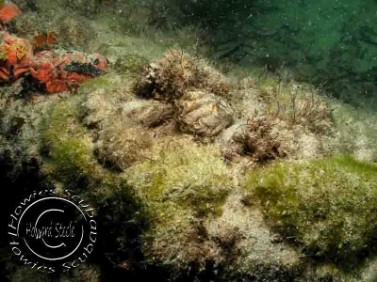
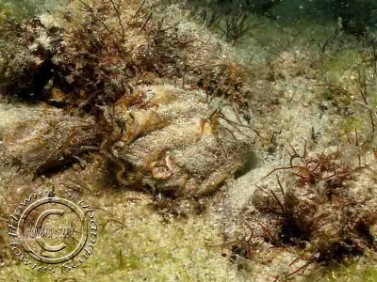
IF YOU'RE NOT GOING DOWN: THEN WHERE THE HELL ARE YOU GOING